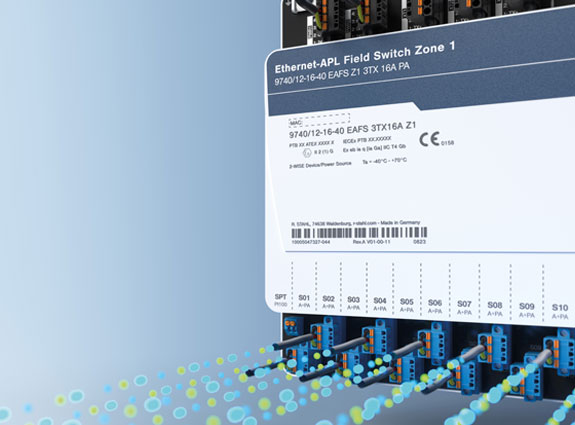End of November 2023 I had the opportunity to attend the plenary session of ISO TC 197 for the first time in my role as liaison officer from the IECEx system.
It must be correctly said that the liaison is initially limited to the cooperation between IECEx and the newly founded “SC1: Hydrogen at scale and horizontal energy systems of ISO TC 197”. The first major standards project that was tackled in SC1 was the creation of a standard which specifies methodologies that can be applied to determine the carbon footprint (CFP) of a product, or partial CFP of a hydrogen product, in line with ISO 14067. This is not necessarily a topic related to explosion protection, i.e. to the IECEx system, but I also participate in the work of ISO TC 197 as a representative of the other IEC conformity assessment systems. With regard to the first standard project of SC1, there are interesting points of contact with the IECQ system (IEC Quality Assessment System).
A carbon footprint is a measure of the total greenhouse gas (GHG) emissions caused by an individual, organisation, event, or product, expressed as carbon dioxide equivalent. Measuring and reducing a carbon footprint is one way to act on climate change, which many organisations have adopted regarding their environmental performance.
For the development of international hydrogen markets, it is paramount first to agree on a uniform methodology for determining the greenhouse gas (GHG) emissions associated with the production, conditioning and transport of hydrogen to consumption gate.
The goals and scopes of the methodologies, which are defined in the new draft standard ISO/TS 19870, correspond to either approach given by ISO 14040:2006: Attributional: an approach that assigns elementary flows and potential environmental impacts to a specific product system typically as an account of the history of the product. The alternative approach is called consequential: an approach that studies the environmental consequences of changes occurring potentially out of the product system.
ISO/TS 19870 aims at increasing the methodologies that should be applied, in line with ISO 14067, to the specific case of the hydrogen value chain, covering different production processes and other parts of the value chain, such as conditioning hydrogen in different physical states, conversion of hydrogen into different hydrogen carriers and the subsequent transport up to the consumption gate.
This new standard creates a stable basis on which an independent assessment of the climate friendliness of different value creation stages and technologies of a future hydrogen economy can be made.
Regulators, public interest groups, and organisational peers are increasingly requesting independent assurance (no greenwashing) that an organisation has prepared carbon footprint reports in accordance with international standard ISO 14067, providing confidence in the claims made by organisations regarding their environmental performance.
The IECQ Carbon footprint of product verification statement service provides independent verification that companies use the correct process, methodology, and registers to calculate the carbon footprint of a given product. The IECQ (peer-assessed) accepted certification bodies, IECQ CBs, issue international IECQ Carbon footprint of product verification statements through the IECQ online certificate system, confirming that the company is transparent in disclosing they have been audited to ISO 14067.
The benefits of independent verification include:
- Increased credibility and transparency. Independent verification provides assurance that the carbon footprint calculation and reduction efforts are accurate, reliable, and trustworthy.
- Improved efficiency: An independent verification helps identify areas for improvement in a company’s carbon footprint management and reduce the risk of over or underestimating emissions.
- Enhanced reputation: Companies that have undergone independent verification of their carbon footprint often see an improvement in their reputation as responsible environmental stewards.
- Increased accountability: Independent verification provides a higher level of accountability and helps ensure that organizations are meeting their commitments to reducing their carbon footprint and addressing climate change.
The ISO/TS 19870 was developed in a remarkably short time of one year. It is planned to add further parts in the coming years with the following focuses:
- Emissions associated with the production of hydrogen up to production gate.
- LH2 to consumption gate.
- NH3 to consumption gate.
- ISO 19870-4 on LOHC to consumption gate.
By using the IECQ verification program and this series of standards it will be possible to cover all major parts and aspects of the hydrogen economy of the future with an effective and efficient conformity assessment program.






![[Translate to Englisch:] [Translate to Englisch:]](/fileadmin/user_upload/mitarbeiter/01_DE/07_Blog/00_Allgemein/blog-explosionsschutz-rstahl-startseite-279x205.jpg)
![[Translate to Englisch:] [Translate to Englisch:]](/fileadmin/user_upload/mitarbeiter/01_DE/07_Blog/00_Allgemein/blog-explosionsschutz-rstahl-ueber-den-blog-279x205.jpg)
![[Translate to Englisch:] [Translate to Englisch:]](/fileadmin/user_upload/mitarbeiter/01_DE/07_Blog/00_Allgemein/blog-explosionsschutz-rstahl-autoren-279x205.jpg)
![[Translate to Englisch:] [Translate to Englisch:]](/fileadmin/user_upload/mitarbeiter/01_DE/07_Blog/00_Allgemein/blog-explosionsschutz-rstahl-newsletter-expert-mail-279x205.jpg)
Write new comment